Transmitters are developed from sensors, and any sensor that outputs a standard signal is called a transmitter. Standard signals are signals in which the form and range of quantities of physical quantities conform to international standards.Because DC signals have the advantages of being unaffected by inductance, capacitance and the nature of the load in the line, and there is no phase shift problem, etc., the International Electrotechnical Commission (IEC) has identified current signals of 4mA~20mA (DC) and voltage signals of 1V~5V (DC) as the unified standard for analog signals in process control systems.
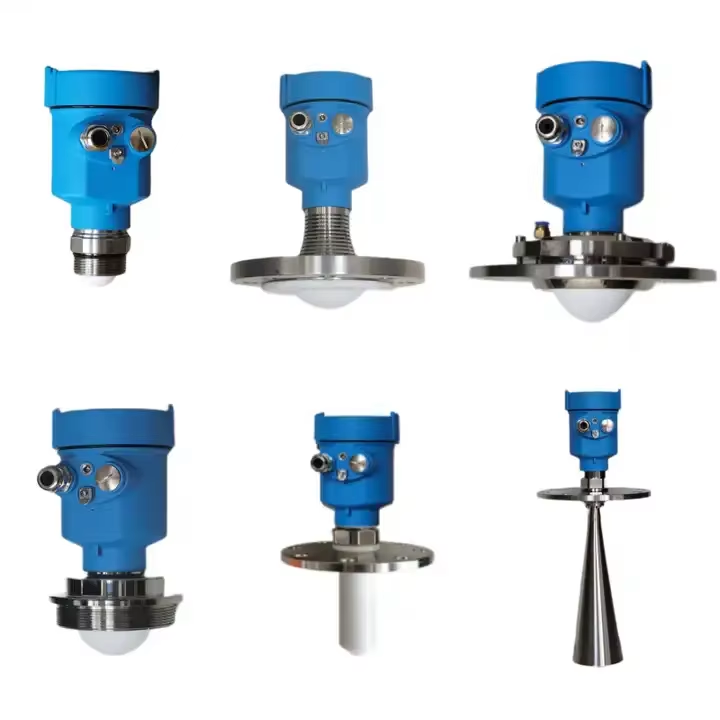
Principle of Composition
The transmitter works on the principle of negative feedback and consists of a measuring section, an amplifier and a feedback section.
The measuring section detects the measured variable x and converts it into an input signal Zi (voltage, current, displacement, force or moment, etc.) that can be accepted by the amplifier.The feedback section converts the output signal y of the transmitter into the feedback signal Zf and sends it back to the input. the algebraic sum of Zi and the zero signal Zo is compared with the feedback signal Zf, and the difference ε is sent to the amplifier for amplification and converted into the standard output signal y. The feedback section is used to detect the measured variable x and convert it into the input signal Zi (voltage, current, displacement, force or torque) that can be accepted by the amplifier.
Categorization
1, the transmitter can be divided into two types of current output type and voltage output type according to the type of output signal.
(1) Voltage output transmitter has the nature of a constant voltage source, PLC analog input module voltage input impedance is very high, if the transmission distance is far away, tiny interference signal current in the module's input impedance will produce high interference voltage, so the remote transmission of analog voltage signals have poorer anti-jamming ability.However, it is suitable for sending the same signal to multiple meters connected in parallel, and the installation is simple, dismantling one of the meters will not affect the work of other meters, and the voltage resistance requirement of the output stage is reduced, thus improving the reliability of the meter.Voltage signals range from 1 to 5 V, 0 to 10 v, a 10 to 10 V, first of all, 1 to 5 V, 0 to 10 V.
(2) Current output type transmitter has the nature of a constant-current source, the internal resistance of the constant-current source is very large. the PLC analog input module's input for the current, the input impedance is low, and the line of the interfering signals in the module generates a very low voltage of interference, so the analog current signals are suitable for theRemote transmission, up to several hundred meters when using shielded cable signal lines.Current signals are standardized as 0 to 10 mA, 0 to 20 mA, 4 to 20 mA, with 4 to 20 mA preferred. 0 mA is often used as a circuit fault or power failure indication signal.
Current signaling and voltage signaling have their own characteristics.Current signals are suitable for long-distance transmission, while voltage signals enable meters to be connected in "parallel system".Therefore, in the control meter system, the transmission signal in and out of the control room adopts the current signal, and the contact between the instruments in the control room adopts the voltage signal, i.e. the way of connecting the wires is the way of transmitting the current and receiving the voltage signal in parallel.Transmitter is divided into two kinds of two-wire system and four-wire system.Four-wire transmitter has two power lines and two signal lines, the zero point of the current signal a few components of the power consumption without strict requirements.Two-wire transmitter only two external wiring, they are both power lines and signal lines, the lower limit of the current signal can not be zero, but the two-wire transmitter wiring is less, the transmission distance is long, the most widely used in industry.
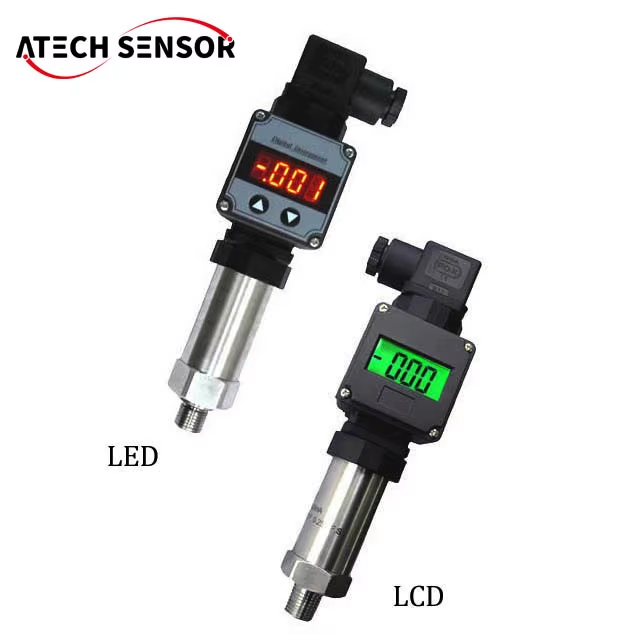
2, according to the different energy sources used, the transmitter is divided into two kinds of pneumatic transmitter and electric transmitter.
(1) Pneumatic transmitter
pneumatic transmitter to dry, clean compressed air as a source of energy, it can be a variety of measured parameters (such as temperature, pressure, flow and level, etc.) into a 0.02 ~ 0.1 IMPa air pressure signals, in order to be transmitted to the regulation, display and other units of the combination of instrumentation for the indication, recording or regulation.Pneumatic transmitter structure is relatively simple, more reliable, electromagnetic fields, radiation and temperature, humidity and other environmental impacts of anti-interference ability, fire, explosion-proof, the price is cheaper; the disadvantage is that the response speed is slower, the transmission distance is limited, and the computer is more difficult to connect.
(2) Electric transmitter
Electric transmitter with electricity as energy source, the signal is more convenient, suitable for long-distance transmission, easy to connect with electronic computers.In recent years can also be made explosion-proof to facilitate safe use.The disadvantage is that the investment is generally higher, by the temperature, humidity, electromagnetic fields and radiation interference is greater: electric transmitter can be a variety of measured parameters into 0 ~ 10V or 4 ~ 20mA (DC current of the unified standard signal), in order to be transmitted to the automatic control system in the other units.
Factor
There are many factors in the circuit that affect the accuracy of the transmitter, the main ones are as follows.
(1) the impact of non-linear components Conventional voltage and current transmitters are mostly AC converters (small transformers), the secondary frequency AC signal after rectification, filtering, voltage stabilization to obtain the final DC signal.Due to the rectifier diode, they are nonlinear devices, so its voltage and current curves are nonlinear characteristics.
(2) The effect of the transmitter iron core conventional transmitter transformations are used in the iron core material as a magnetizing medium.On the one hand, due to the nonlinear characteristics shown by the ferromagnetic material (magnetization meow line of the starting zone and saturation zone), is not an ideal linear transmission relationship, and therefore will inevitably have an impact on the accuracy of the transmitter.On the other hand, due to the hysteresis of ferromagnetic materials, the iron core will also have an impact on the accuracy of the transmitter.Generally in the range of industrial frequency, the conventional silicon steel sheet hysteresis angle varies within 0 ° ~ 15 °, and the existence of this hysteresis angle is equivalent to an increase in the reactive power component, due to the conventional power transmitter is the voltage and current signals through the multiplier arithmetic to derive the power, so this hysteresis angle will also affect the accuracy of the power transmitter.
(3) the impact of operational amplifiers Conventional power transmitters are mostly composed of operational amplifiers, the temperature of the operational amplifiers have a great impact on the work of the operational amplifiers, temperature changes, the "zero" point drift, making the operating point is not stable, which directly affects the accuracy and reliability of the transmitter.
(4) The impact of the transmitter calibration value selection Although the transmitter calibration value in the selection as close as possible to the full value, but the actual use of the transmitter often can not work in the linear region and cause errors.
(5) impedance mismatch caused by the impact of error.
(6) the impact of system imbalance Conventional transmitter calculation of power is generally approximate that the system is balanced, but in fact it is not balanced, the system is often this imbalance also has an impact on the accuracy of the transmitter.
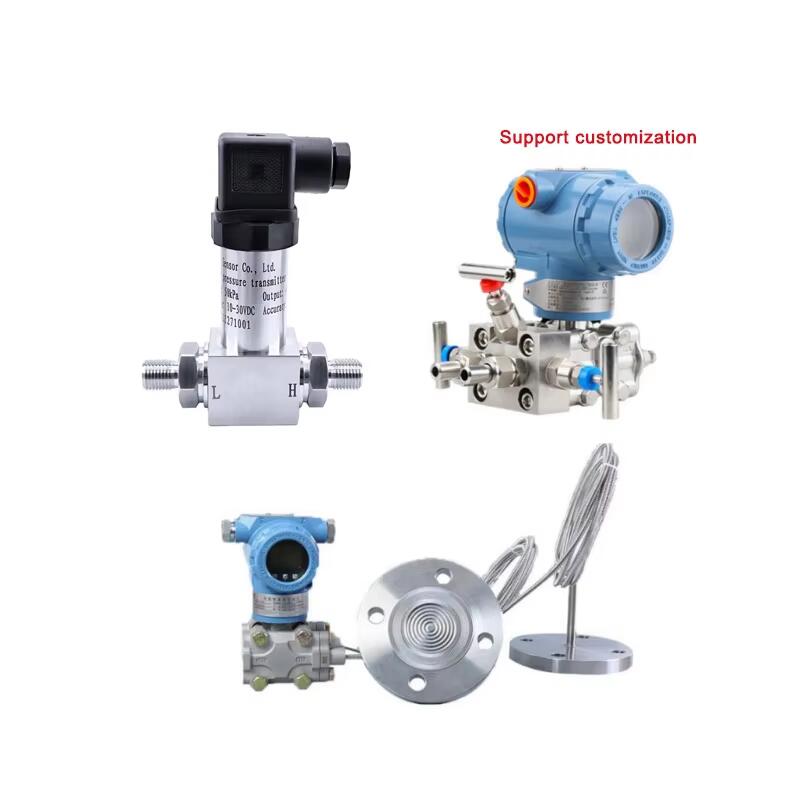
Function
The function of the transmitter is to detect process parameters and transmit the measured values in the form of specific signals for display and regulation.
The role in the automatic detection and regulation system is to transform various process parameters such as temperature, pressure, flow, level, composition and other physical quantities into a unified standard signal, which is then transmitted to the regulator and indicator recorder for regulation, indication and recording.
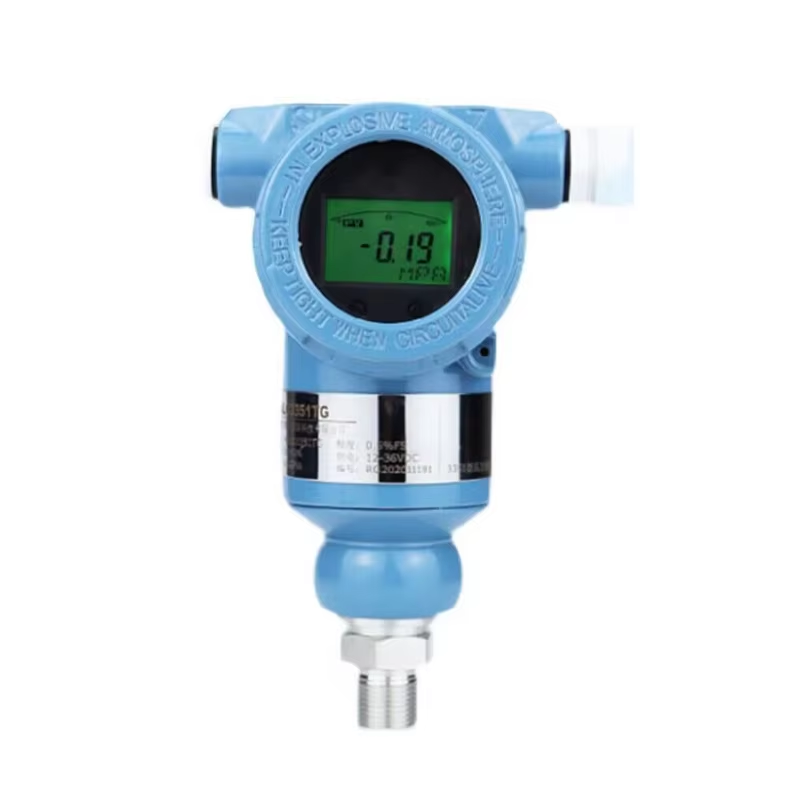
Selection Note
Transmitter selection is usually based on installation conditions, environmental conditions, instrument performance, economy and application media and other considerations.The actual use is divided into direct and indirect measurement; its use has process measurement, process control and device interlock.Common transmitters are common pressure transmitters, differential pressure transmitters, single flange transmitters, double flange transmitters, inserted flange transmitters and so on.
Pressure transmitters and differential pressure transmitters measure pressure and the difference between two pressures in terms of nomenclature alone, but they indirectly measure a lot of parameters.Such as pressure transmitters, in addition to measuring pressure, it can also measure the liquid level in the equipment.When measuring the liquid level in an atmospheric pressure vessel, one pressure transmitter can be used.When measuring the level of pressurized containers, two pressure transformers can be used, i.e., one for measuring the lower limit and one for measuring the upper limit, and their output signals can be subtracted to measure the liquid level, which is generally used in differential pressure transmitters.In the container level and pressure value is unchanged it can also be used to measure the density of the medium.The measuring range of the pressure transmitter can be made very wide, starting from the absolute pressure 0 can be up to 100MPa (general).
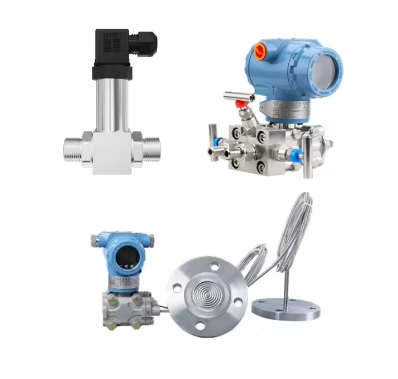
Common trouble
1, the installation should make the transmitter pressure sensitive parts of the axial perpendicular to the direction of gravity, if the installation conditions are limited, it should be installed and fixed after adjusting the transmitter zero position to the standard value.
2、The residual pressure can not be released, so the sensor zero and can not come down.The best way to rule out this reason is to remove the sensor, directly see if the zero position is normal, if normal, replace the seal and try again.
3, pressurized transmitter output does not change, and then pressurized transmitter output suddenly change, the pressure relief transmitter zero can not return. The reason for this phenomenon is most likely caused by the pressure sensor seal.
4, whether to meet the power supply requirements; power supply and transmitter and load equipment between the wiring error.If there is no voltage on the transmitter terminals or reverse polarity can cause no voltage signal output from the transmitter.
5, the pressure sensor and transmitter shell generally need to be grounded, the signal cable shall not be mixed with the power cable laying, sensors and transmitters should be avoided around the strong electromagnetic interference.Sensors and transmitters in use should be in accordance with industry regulations for periodic calibration.
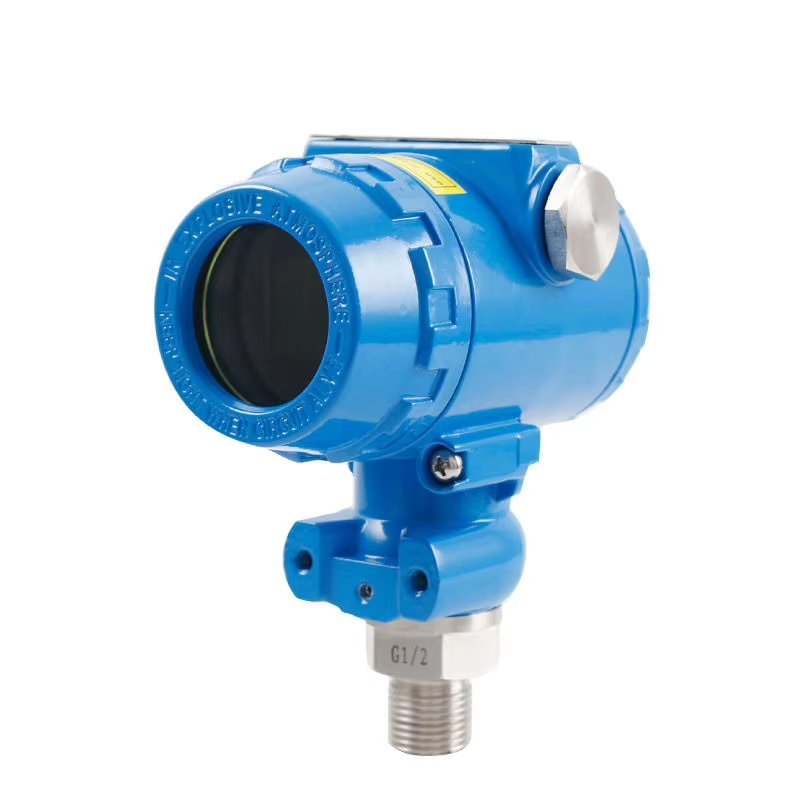
6, the user in the selection of pressure sensors and transmitters, should fully understand the working conditions of the pressure measurement system, according to the need to choose reasonably, so that the system works in the best state, and can reduce the cost of the project.
7, Transmitted to both sides of the measuring diaphragm through the isolation piece and the filling liquid inside the element.Measuring diaphragm and the electrodes on each side of the insulating sheet to form a capacitor.
8, the pressure transmitter requires a weekly inspection, a monthly inspection, mainly to remove the dust within the instrument, the electrical components carefully check the output current value should be frequently calibrated, the pressure transmitter is a weak internal, must be separated from the outside world of strong electricity.
The direction of development
Conventional transmitter no matter how to improve the accuracy, but still can not overcome its inherent operating characteristics, the error is inevitable.The rapid development of computer technology for the development and production of high-performance transmitters to provide a broad prospect.Monolithic AC sampling transmitter has a high cost-effective, high precision, stable and reliable work, without frequent tuning.

The single-chip AC sampling transmitter has the following characteristics.
(1) Sampling period and sampling timing
1) Sampling period selection in the grid in the high harmonic component is not large, the sampling period can be selected 8 times, 12 times, such as low-rate way, which is less demanding on the microcontroller and its equipment, the data processing is also simple; if the grid in the high harmonic component is large, then it is necessary to improve the sampling rate.
2) The timing of sampling, especially in the low-rate sampling mode, if the sampling time happens to be in the peaks and valleys of the high harmonics, it will have a great impact on the accuracy.Therefore, in the device and technology allow range, should try to improve the sampling frequency, so that the impact of interference in the power grid to inhibit.
(2) Iron core nonlinear compensation monolithic AC sampling transmitter can realize segmented nonlinear compensation of the iron core.According to the accuracy requirements and the characteristics of the iron core itself, each iron core has a corresponding compensation curve, and can realize segmented compensation.
(3) Compensation of hysteresis angle of iron core As the microcontroller has a storage function, the hysteresis angle compensation of iron core becomes very simple.After measuring the hysteresis angle of the iron core, the hysteresis angle of each iron core is stored in the microcontroller, and the phase shift is processed through the program.This compensation is fully idealizable.

